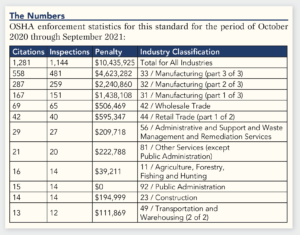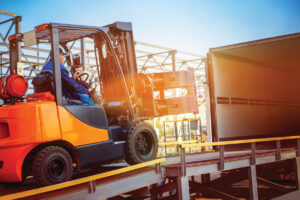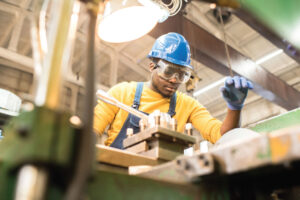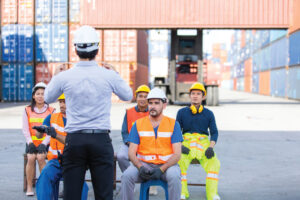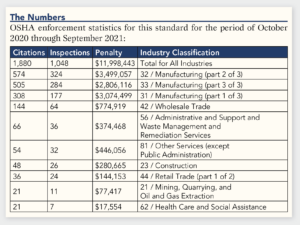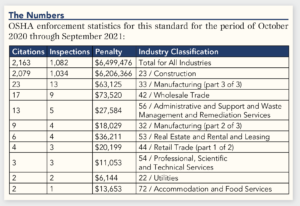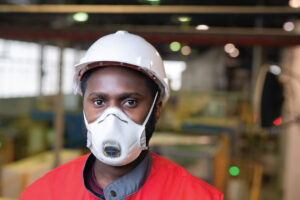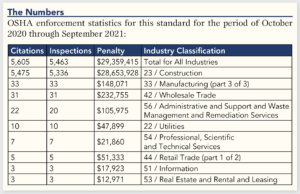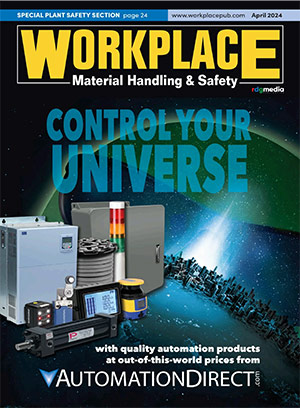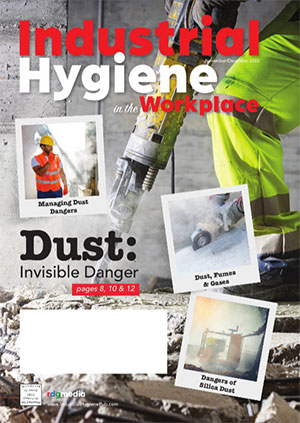Ranking: #10 Machinery and Machine Guarding Moving machine parts have the potential to cause severe workplace injuries, such as crushed fingers or hands, amputations, burns or blindness. Workers who operate and maintain machinery suffer approximately 18,000 amputations, lacerations, crushing injuries, abrasions, and over 800 deaths per year. Safeguards are essential for protecting workers from these…
Read More >>Ranking: #9 The Risks Powered industrial trucks, commonly called forklifts or lift trucks, are used in many industries, primarily to move materials. They can also be used to raise, lower, or remove large objects or a number of smaller objects on pallets or in boxes, crates, or other containers. Powered industrial trucks can either be…
Read More >>Ranking: #8 The Risk Thousands of people are blinded each year from work-related eye injuries that could have been prevented with the proper selection and use of eye and face protection. The majority of eye injuries result from small particles or objects – like dust, cement chips, metal slivers and wood chips – striking or…
Read More >>Ranking: #7 The Risk Workers performing tasks 6 feet or more above lower levels are at risk of fatal falls or serious injuries. In the construction industry alone, falls generally account for about a third of the deaths that occur on the job each year. Equipping employees with the type of fall protection appropriate to…
Read More >>Ranking: #6 Energy sources including electrical, mechanical, hydraulic, pneumatic, chemical, thermal or other sources in machines and equipment can be hazardous to workers. During the servicing and maintenance of machines and equipment, the unexpected startup or release of stored energy can result in serious injury or death to workers. Injuries may include electrocution, burns, crushing,…
Read More >>Ranking: #5 The Risks Manufacturing, construction, mining, warehousing, welding, transportation, and oil and gas are among the industries in which hazardous chemicals are routinely used. Exposure to toxic substances can cause both short-term health emergencies and long-term illnesses, including severe burns and inflammation, respiratory difficulties and cancer. In order to ensure worker safety, information about…
Read More >>Ranking: #4 The Risks The Bureau of Labor Statistics’ Census of Fatal Occupational Injuries (CFOI) reported 52 fatal falls to lower levels from scaffolding in 2020. While some of these are attributable to unsafe work practices, scaffolding that is poorly made or lacking in proper guardrails or protection can be treacherous for workers who use it.…
Read More >>Ranking: #3 The Risks Falls from ladders can result in serious injuries, permanent disability and death. Injuries related to ladders can be traced to a variety of causes. Overreaching instead of descending and moving the ladder to a different location is a common cause. Using a ladder when some other piece of equipment is called…
Read More >>Ranking: #2 The Risks Respirators protect workers against insufficient oxygen environments, harmful dusts, fogs, smokes, mists, gases, vapors and sprays. These hazards may cause cancer, lung impairment, diseases or death. Compliance with the OSHA Respiratory Protection Standard could avert hundreds of deaths and thousands of illnesses annually. Respirators protect the user in two basic ways.…
Read More >>Ranking: #1 The Risk Falls are among the most common causes of serious work-related injuries and deaths. There is a myriad of ways in which falls can occur in an occupational setting and falls from even relatively low heights can result in injury, permanent disability and fatalities. Those working in construction and extraction, healthcare support;…
Read More >>
